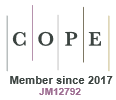The influence of environment on seed production capacity in white clover (Trifolium repens L.). I. Controlled environment studies
RG Thomas
Australian Journal of Agricultural Research
12(2) 227 - 238
Published: 1961
Abstract
Ramets of New Zealand Government Stock white clover (Trifolium repens L.) were grown in all combinations of 18-, 14-, and 10-hr photoperiods at constant temperatures of 10, 20, and 30°C. Inflorescence initiation, inflorescence height, number of florets per inflorescence, floret size, ovule number, and pollen fertility were all strongly influenced by environment. Greatest inflorescence initiation occurred in long days at high temperatures, in which conditions, also, the ratio of peduncle to petiole length was highest. Long days and low temperatures led to maximal floret number per inflorescence, floret size, and ovule number per floret. Pollen sterility, as measured by percentage of aborted grains, was little affected by day length but a high level of sterility was induced by growth at 10°C. The relative importance of these factors and the interactions between them in determining seed production capacity are discussed.https://doi.org/10.1071/AR9610227
© CSIRO 1961


